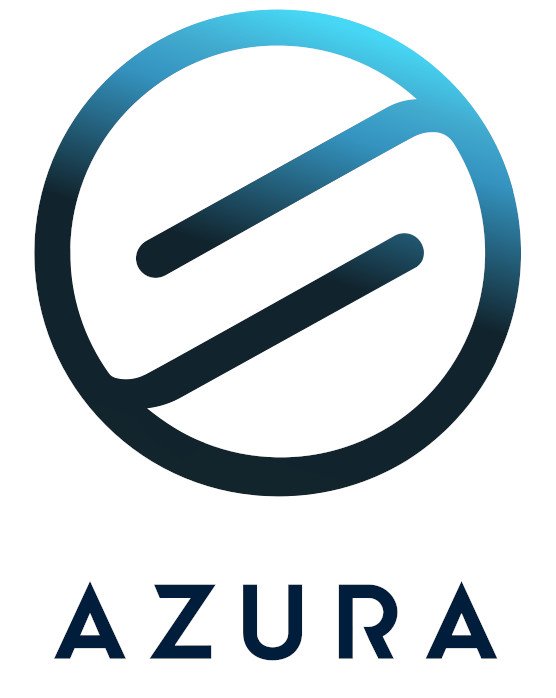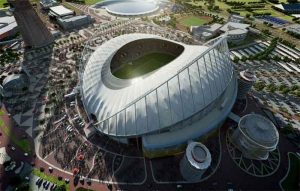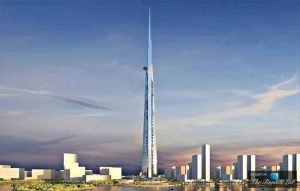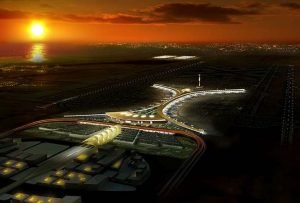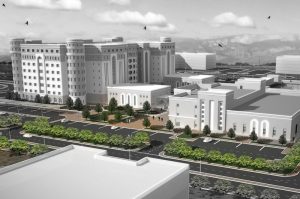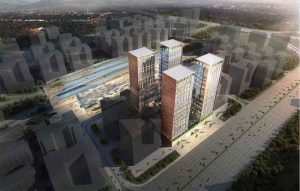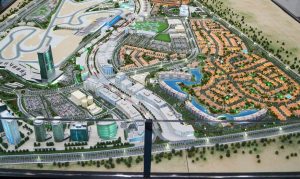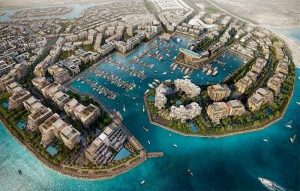District Energy Solutions
Design of District Heating / Cooling , co-generation, tri-generation plants and infrastructure.
District Energy Solutions
District energy systems (DES) are an important component of sustainable urban development. These systems consist of one or more central plants that generate hot water, steam, and/or chilled water. The thermal energy is then distributed through a network of insulated pipes to provide space heating, hot water, and/or air conditioning for nearby buildings.
District energy systems serve various markets, including downtowns, university campuses, hospitals, airports, and industrial complexes, as well as densely populated residential areas of larger municipalities. These systems offer several benefits, including cost-effectiveness, reliability, and reduced carbon emissions.
By aggregating energy loads for multiple buildings, district energy systems achieve economies of scale that help reduce energy costs and enable the use of high-efficiency technologies like combined heat and power (CHP). This makes district energy systems an excellent option for large developments and urban areas with high energy demands.
Technology Overview
District energy solutions involve a combination of various technologies that work together to produce and distribute thermal energy to multiple buildings in a given area. The technology used in district energy systems typically includes central plants, heat exchangers, insulated pipes, and building-level equipment.
Central plants are the heart of district energy systems, generating hot water, steam, and/or chilled water using various sources of energy, such as natural gas, biomass, electricity or waste heat. Heat exchangers are used to transfer the thermal energy produced by the central plants to the water or other fluid that flows through the insulated pipes.
The insulated pipes carry the hot or chilled water from the central plants to buildings in the district, where building-level equipment is used to transfer the thermal energy from the fluid in the pipes to the heating, cooling, or hot water systems of each building. Building-level equipment may include heat exchangers, pumps, and valves.
District energy solutions also often incorporate high-efficiency technologies, such as combined heat and power (CHP), which produce both heat and electricity from the same energy source, increasing overall energy efficiency. Other technologies, such as thermal energy storage (TES), can also be used to optimize the operation of district energy systems. TES tanks can be integrated with the district cooling plant to optimize the overall efficiency of the system, provide additional reliability and back-up cooling as well as lowering electricity costs by production of cooling (or portion of it) during electricity off-peak hours.
Overall, district energy solutions use a combination of technologies to create a reliable and efficient thermal energy network that serves multiple buildings in a given area, providing cost savings and environmental benefits.
District Energy Design Services
Azura Consultancy’s consultancy services cover a range of areas, including Consultancy and Advisory Services, Feasibility Studies, and Value Engineering and Design Optimization.
Consultancy and Advisory Services: Azura Consultancy provides expert advice and guidance to clients regarding district energy solutions. This includes assessing the specific needs and requirements of clients, developing customized solutions, and providing support throughout the implementation process.
Feasibility Studies are a crucial part of any district energy project, and Azura Consultancy offers comprehensive feasibility studies to assess the technical, economic, and environmental viability of district energy solutions. These studies help clients make informed decisions about the potential benefits of implementing district energy systems.
Engineering Design: Our company specializes in providing comprehensive engineering design services for district energy solutions, covering various project stages, including concept design, schematic design, detailed design, and construction drawings. We manage all aspects, including system component selections and engineering calculations, to ensure that your district heating and cooling plants are carefully designed and executed to meet your specific needs and sustainability goals.
Value Engineering and Design Optimization is another area of expertise at Azura Consultancy. Our team of experts works closely with clients to optimize the design of district energy systems, ensuring that they are cost-effective, energy-efficient, and environmentally sustainable.
Overall our consultancy services help clients navigate the complexities of district energy solutions, from the initial feasibility studies to the final implementation. Our team of experts has extensive knowledge and experience in all aspects of district energy systems, and we work closely with clients to develop customized solutions that meet their specific needs and requirements.
Engineering Design
Engineering design services are a critical component of developing district energy solutions, and typically involve three distinct phases: Concept Design, Schematic Design, and Detailed Design.
Concept Design is the initial phase of the engineering design process, where Azura Consultancy works with clients to develop a high-level concept for the district energy solution. This involves assessing the client’s needs and requirements, evaluating potential energy sources and distribution methods, and developing a preliminary design concept that meets the project goals and objectives.
Schematic Design is the next phase of the engineering design process, where Azura Consultancy works with the client to develop a more detailed design of the district energy solution. This includes developing a comprehensive schematic design that outlines the major components of the system, including the central plant, distribution network, and building-level equipment.
Detailed Design is the final phase of the engineering design process, where Azura Consultancy works with the client to develop a detailed design of the district energy system. This includes developing detailed specifications for all components of the system, including the central plant, distribution network, and building-level equipment. Detailed design also involves evaluating energy efficiency, optimizing the system to minimize energy losses and reduce carbon emissions, and ensuring compliance with all relevant regulations and codes.
Overall, engineering design services at Azura Consultancy are a comprehensive process that involves the development of a district energy solution from concept to detailed design. Our team of experts has extensive knowledge and experience in all aspects of district energy systems, and we work closely with clients to develop customized solutions that meet their specific needs and requirements.
Unlock Sustainability: Embrace District Energy Solutions With Us!
Experience the power of district energy solutions to optimize efficiency, reduce carbon emissions, and create a sustainable future for your community. Partner with our experts and take the first step towards a greener tomorrow.
Engineering Design Expertise
- District Energy Plants (Cooling/Heating)
- Combined Heat and Power (CHP) and Trigeneration Plants
- Piping distribution networks
- Energy Transfer Station (ETS)
- Thermal Energy Storage (TES)
- Reverse Osmosis (RO) Plants
- Infrastructure services
- Pumping stations
- System Integration and control systems (e.g. SCADA, PLC, BMS)
- Project Specification Preparation
- Tender package preparation (e.g. Employer Requirements, write-ups, specs, BOQ)
- Renewable Energy e.g. LEED Certification
- Shop drawings, Issued for Construction Drawings (IFC) preparation
- Specialized engineering services:
- District energy plants annual operation and maintenance (O&M) cost forecasting
- Financial Modeling
Frequently Asked Questions On District Energy
District energy is a highly efficient method of heating and cooling buildings, residences, and industrial facilities by utilizing a centralized energy system. Instead of individual buildings having their own separate heating and cooling systems, district energy systems distribute thermal energy—usually in the form of hot water, steam, or chilled water—from a central plant through a network of underground pipes to multiple buildings in a local area.
A district energy system is an integrated approach to providing heating, cooling, and sometimes electricity to multiple buildings or facilities from a centralized energy source.
A district energy system operates through a series of interconnected components to provide heating, cooling, and sometimes electricity to multiple buildings or facilities within a localized area.
District energy systems are known for their high efficiency compared to conventional decentralized heating and cooling systems. Several factors contribute to their efficiency such as Centralized Energy Generation, Combined Heat and Power, Optimized Distribution, oad Balancing and Demand Management
